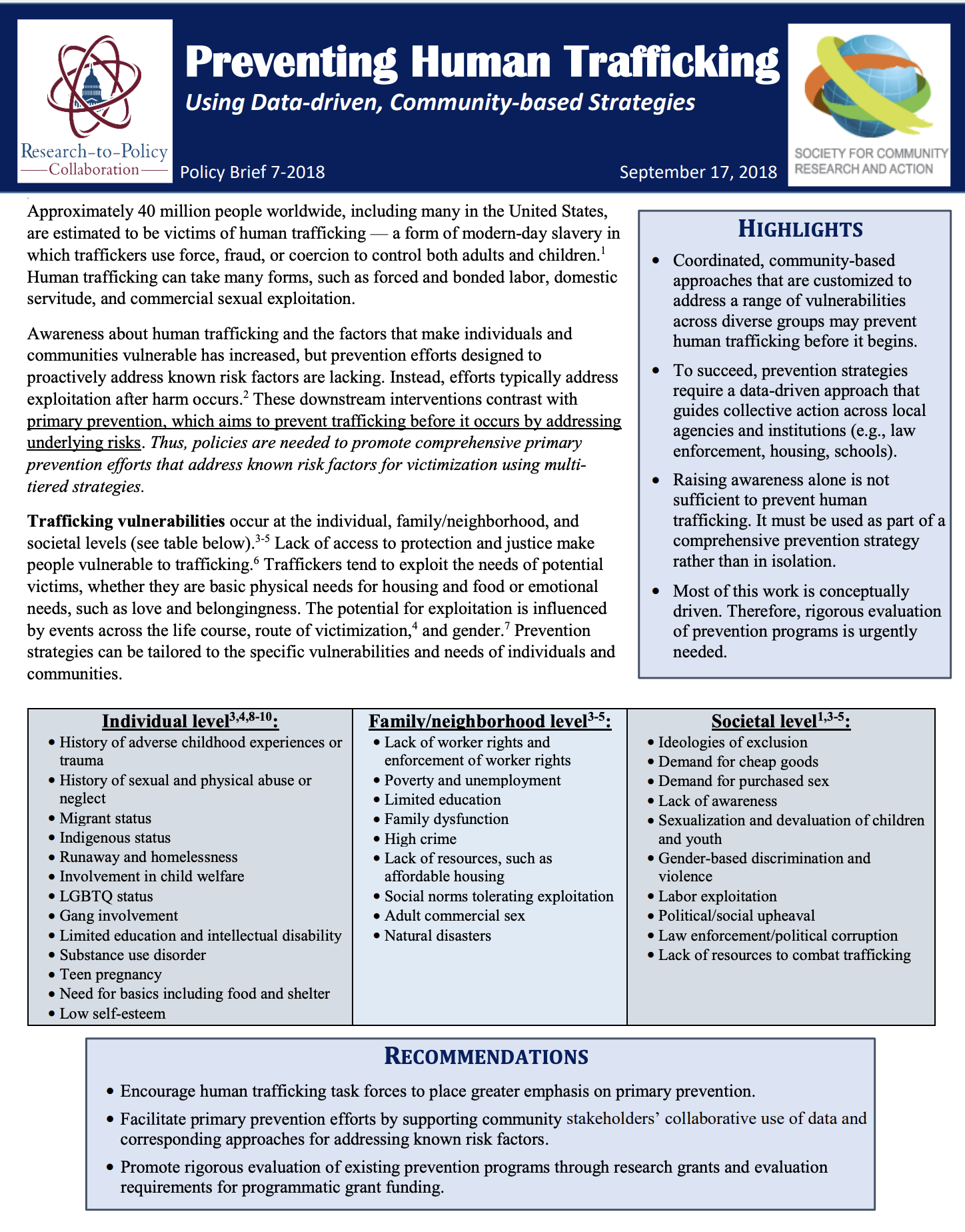
Trafficking in persons is defined as the recruitment, transportation or acquisition of persons by force, coercion, fraud, deception, the abuse of power or of a position of vulnerability or of the giving or receiving of payments or benefits to achieve the consent of a person for the purpose of exploitation (UN Palermo Convention).
Identifying victims is the first and fundamental step for protection.
- Systematic data collection across diverse agencies
- A recent study on estimating the prevalence of human trafficking in Ohio by University of Cincinnati: Summary & Full Report
- Human Trafficking Data Collection Project examines current data collection practices, standards, and technologies.
- Interagency data exchange and concerns about data security
- National Electronic Interstate Compact Enterprise (NEICE) is a rapid and secure inter-state exchange system for data/documents required to place children.
- CyberTipline operated by National Center for Missing & Exploited Children.
Capacity Building and Outreach is essential for the rehabilitation phase.
- Training local workers and law enforcement staff for screening and correct referrals (e.g., Houston Task Force Toolkit, Hotel & Lodging Assosciation Human Trafficking Training Toolkit)
- At the state level, anti-human trafficking task force coordinates referrals to relevant service providers and local agencies. Model examples include: (i) Ohio Task Force coordinates 22 anti-human trafficking coalitions; (ii) North Carolina Task force enlisted local member businesses and organizations.
Partnership for prevention is the key to achieve progress across the 3P’s (prosecution, protection, prevention) and enlist all segments of society. Successful examples for models and collaborative programs:
- Changing Actions to Change Habits (CATCH) is a court-based program for the convicted victims of human trafficking in Ohio aiming to combat “the cycling through the system” pattern. Partnering with local service providers and agencies, CATCH provided assessment and treatment services
- Local organizations that support employment and job skill development
- Evaluation report by Franklin University
- Project NoREST is a federally funded intervention project and awareness campaign launched by North Carolina’s Human Trafficking Commission and University of North Carolina’s (UNC) School of Social Work.
- National Human Trafficking Hotline Referral Directory provides an active map of every anti-trafficking organization in each state.
The Research-to-Policy Collaboration (RPC) works to bring together research professionals and public officials to support evidence-based policy. Please visit their website to learn more.
Key Information
RPC Website
Research-to-Policy Collaboration
Publication DateMay 1, 2019
Topic Area(s)Violence and Victimization
Resource TypeWritten Briefs
Share This Page
Trafficking in persons is defined as the recruitment, transportation or acquisition of persons by force, coercion, fraud, deception, the abuse of power or of a position of vulnerability or of the giving or receiving of payments or benefits to achieve the consent of a person for the purpose of exploitation (UN Palermo Convention).
Identifying victims is the first and fundamental step for protection.
- Systematic data collection across diverse agencies
- A recent study on estimating the prevalence of human trafficking in Ohio by University of Cincinnati: Summary & Full Report
- Human Trafficking Data Collection Project examines current data collection practices, standards, and technologies.
- Interagency data exchange and concerns about data security
- National Electronic Interstate Compact Enterprise (NEICE) is a rapid and secure inter-state exchange system for data/documents required to place children.
- CyberTipline operated by National Center for Missing & Exploited Children.
Capacity Building and Outreach is essential for the rehabilitation phase.
- Training local workers and law enforcement staff for screening and correct referrals (e.g., Houston Task Force Toolkit, Hotel & Lodging Assosciation Human Trafficking Training Toolkit)
- At the state level, anti-human trafficking task force coordinates referrals to relevant service providers and local agencies. Model examples include: (i) Ohio Task Force coordinates 22 anti-human trafficking coalitions; (ii) North Carolina Task force enlisted local member businesses and organizations.
Partnership for prevention is the key to achieve progress across the 3P’s (prosecution, protection, prevention) and enlist all segments of society. Successful examples for models and collaborative programs:
- Changing Actions to Change Habits (CATCH) is a court-based program for the convicted victims of human trafficking in Ohio aiming to combat “the cycling through the system” pattern. Partnering with local service providers and agencies, CATCH provided assessment and treatment services
- Local organizations that support employment and job skill development
- Evaluation report by Franklin University
- Project NoREST is a federally funded intervention project and awareness campaign launched by North Carolina’s Human Trafficking Commission and University of North Carolina’s (UNC) School of Social Work.
- National Human Trafficking Hotline Referral Directory provides an active map of every anti-trafficking organization in each state.
The Research-to-Policy Collaboration (RPC) works to bring together research professionals and public officials to support evidence-based policy. Please visit their website to learn more.

Key Information
RPC Website
Research-to-Policy Collaboration
Publication DateMay 1, 2019
Topic Area(s)Violence and Victimization
Resource TypeWritten Briefs
Share This Page
LET’S STAY IN TOUCH
Join the Evidence-to-Impact Mailing List
Keep up to date with the latest resources, events, and news from the EIC.




